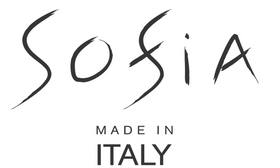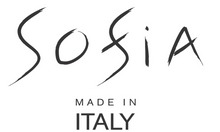History of Italian dress
The history of Italian dress is a captivating tapestry woven with centuries of evolution, reflecting the country's rich cultural heritage, artistic prowess, and its influence on global fashion.
Italian fashion history finds its roots in the early 14th century when Italy was a mosaic of city-states, each with its unique cultural identity and distinct fashion sensibilities. Cities like Florence, Venice, Milan, and Rome played pivotal roles in the emergence of Italian clothing styles.
The Renaissance period (14th to 17th centuries) marked a significant shift in Italian dress. The era brought about a renewed interest in art, literature, and culture. Fashion was a manifestation of this cultural rebirth. The Medici family in Florence was particularly instrumental in influencing Italian fashion, with sumptuous fabrics, intricate embroidery, and elegant silhouettes dominating the attire of the elite.
During the 16th century, Italian fashion witnessed the birth of the "Italian style" as it gained global recognition. Sleek lines, opulent
fabrics, and an emphasis on expertise became hallmarks of Italian attire. Italy's dominance in the silk trade, especially in cities like Venice and Genoa, contributed to the luxurious nature of its fashion.
The 17th and 18th centuries saw the rise of Baroque fashion. Italy's elite flaunted extravagant and ornate attire, embracing elaborate details, such as lace, ribbons, and rich fabrics. The grandeur of the Baroque era reflected in opulent, grandiose clothing designs.
>
The 19th century brought significant changes to Italian dress. The unification of Italy in 1861 led to a cultural shift and the emergence of a more unified Italian identity. Traditional dress started to give way to more modern and simplified attire, particularly for the middle and working classes.
The early 20th century saw the birth of Italian fashion houses. Renowned names like Gucci, Prada, and Farrago emerged, cementing Italy's reputation as a global fashion hub. Milan, in particular, became a powerhouse of haute couture, hosting fashion weeks that displayed Italian creativity and innovation.
The mid-20th century was a period of renaissance for Italian fashion. The post-World War II era witnessed a revival in Italy's fashion industry. Designers like Gianni Versace, Giorgio Armani, and Valentino gained international acclaim for their innovative designs and quality. Italian fashion became synonymous with luxury, quality, and cutting-edge style.
The latter part of the 20th century saw Italy's influence on fashion grow exponentially. Italian design houses expanded their influence globally, setting trends that reverberated throughout the fashion world. The 'Made in Italy' label became a mark of quality and sophistication.
Italian fashion's success can attributed to various factors. The meticulous artistry, attention to detail, and a deep-rooted appreciation for art and beauty have been fundamental to its evolution. Italian designers have consistently drawn inspiration from the country's rich cultural history, architecture, art, and natural landscapes, infusing their creations with an indisputable Italian essence.
In recent years, Italian fashion has continued to evolve. Emerging designers alongside established fashion houses have pushed boundaries, experimenting with new materials, sustainability, and technology, while staying true to Italy's legacy of quality and elegance.
The history of Italian dress is a testament to the country's enduring legacy in the world of fashion. From the lavishness of the Renaissance to the modern-day innovation, Italian fashion remains an influential force, continuously shaping global trends and captivating fashion enthusiasts worldwide.








